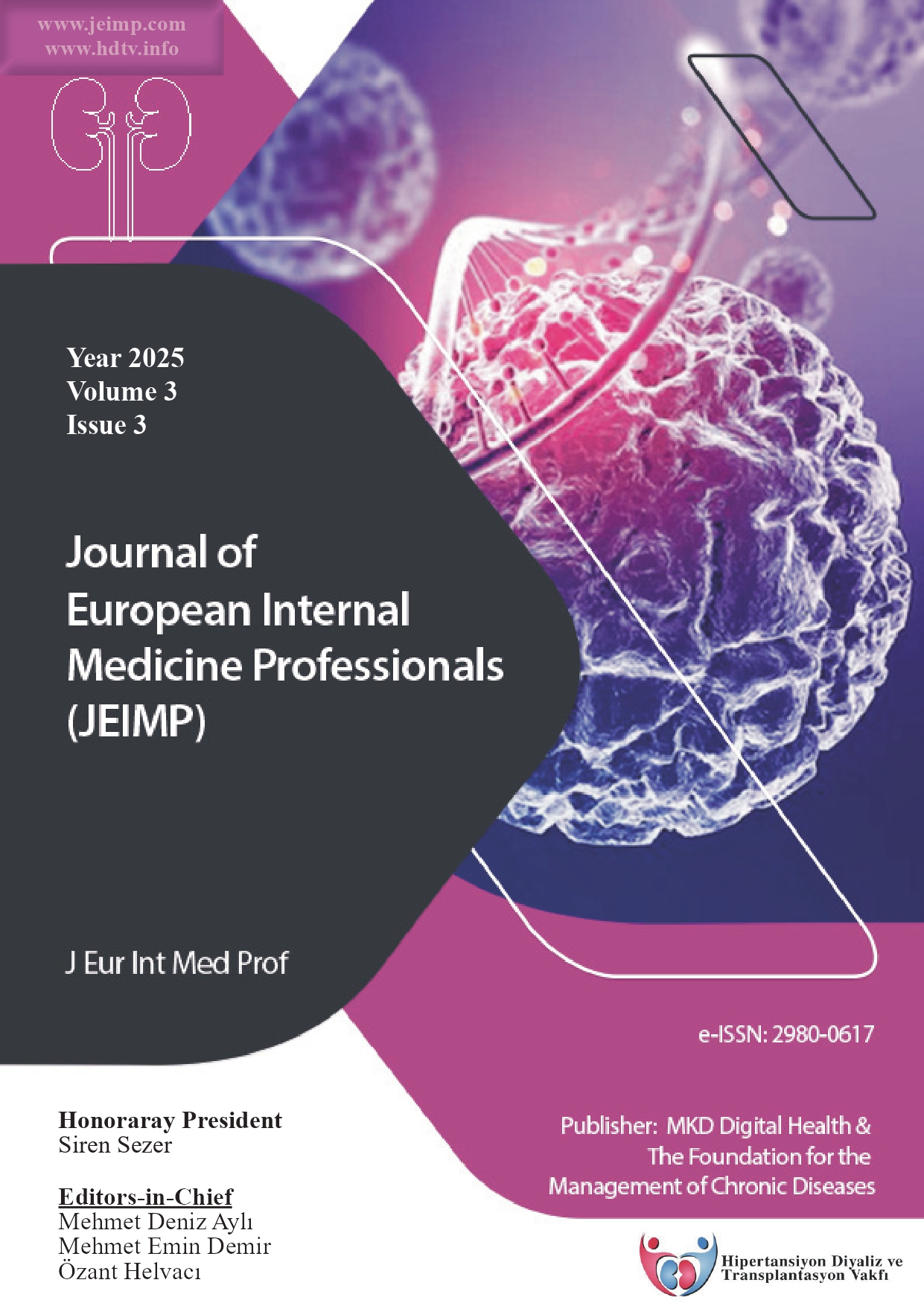Seasonal, Geographic, and Socioeconomic Patterns of Public Interest in Frailty Syndrome: Insights From Google Trends
Public Interest in Frailty Syndrome
DOI:
https://doi.org/10.5281/zenodo.16742580Keywords:
Frailty, Public Health, Social Media/trends, Socioeconomic Factors, Digital Health, AgingAbstract
Background: Frailty syndrome is a complex geriatric condition characterized by reduced physiological reserves and increased vulnerability to stressors. While its clinical implications are well established, knowledge on public awareness remains limited. As online search behavior increasingly reflects public interest, tools like Google Trends offer real-time insights into population-level awareness of frailty and its influencing factors.
Methods: This observational study analyzed global Google Trends data for the search topic “frailty syndrome” from January 2004 to May 2025. Relative search volume (RSV) was examined across temporal, seasonal, geographic, and socioeconomic dimensions. Seasonal trends were evaluated using time-series decomposition and winter-to-summer amplitude ratios. Geographic patterns were assessed by mapping RSV and classifying countries by World Bank income levels. Pearson correlation was used to assess associations between RSV and socioeconomic indicators including GDP per capita and internet penetration.
Results: Global RSV increased from a baseline mean of 8.2 (±3.1) in 2004–2009 to a peak of 78.5 (±15.2) in 2020, followed by sustained elevated interest through 2025 (mean: 45.3 ±12.1). Seasonal analysis showed consistent winter peaks, with amplitude ratios exceeding 1.3. Japan had the highest RSV (100), followed by the United Kingdom (55), Singapore (52), and Ireland (44). All top countries were high-income. RSV was significantly correlated with GDP per capita (r = 0.62, p < 0.01) and internet penetration (r = 0.58, p < 0.01).
Conclusion: Search interest varied by season and socioeconomic context. Higher wintertime interest may reflect seasonal vulnerability in older adults, while increased search activity in high-income countries suggests better digital access and health literacy. Low visibility in lower-income regions highlights a digital and educational gap. Google Trends provides meaningful insight into frailty awareness. Understanding seasonal and socioeconomic patterns can guide targeted public health campaigns to promote early detection and prevention in aging populations.
References
Fried LP, Tangen CM, Walston J, et al. Frailty in older adults: evidence for a phenotype. J Gerontol A Biol Sci Med Sci. 2001;56(3):M146-M156. doi:10.1093/gerona/56.3.m146
Collard RM, Boter H, Schoevers RA, Oude Voshaar RC. Prevalence of frailty in community-dwelling older persons: a systematic review. J Am Geriatr Soc. 2012;60(8):1487-1492. doi:10.1111/j.1532-5415.2012.04054.x
Ofori-Asenso R, Chin KL, Mazidi M, et al. Global Incidence of Frailty and Prefrailty Among Community-Dwelling Older Adults: A Systematic Review and Meta-analysis. JAMA Netw Open. 2019;2(8):e198398. Published 2019 Aug 2. doi:10.1001/jamanetworkopen.2019.8398
Santos-Eggimann B, Cuénoud P, Spagnoli J, Junod J. Prevalence of frailty in middle-aged and older community-dwelling Europeans living in 10 countries. J Gerontol A Biol Sci Med Sci. 2009;64(6):675-681. doi:10.1093/gerona/glp012
Dent E, Morley JE, Cruz-Jentoft AJ, et al. Physical Frailty: ICFSR International Clinical Practice Guidelines for Identification and Management. J Nutr Health Aging. 2019;23(9):771-787. doi:10.1007/s12603-019-1273-z
Puts MTE, Toubasi S, Andrew MK, et al. Interventions to prevent or reduce the level of frailty in community-dwelling older adults: a scoping review of the literature and international policies. Age Ageing. 2017;46(3):383-392. doi:10.1093/ageing/afw247
Cesari M, Prince M, Thiyagarajan JA, et al. Frailty: An Emerging Public Health Priority. J Am Med Dir Assoc. 2016;17(3):188-192. doi:10.1016/j.jamda.2015.12.016
Volf C, Wium-Andersen MK, Wium-Andersen IK, et al. Seasonality and sun exposure in incidence of major depression, bipolar disorder, and first-time use of antidepressant medication. Nord J Psychiatry. 2024;78(7):603-609. doi:10.1080/08039488.2024.2379848
Hoogendijk EO, van Hout HP, Heymans MW, et al. Explaining the association between educational level and frailty in older adults: results from a 13-year longitudinal study in the Netherlands. Ann Epidemiol. 2014;24(7):538-44.e2. doi:10.1016/j.annepidem.2014.05.002
Nuti SV, Wayda B, Ranasinghe I, et al. The use of google trends in health care research: a systematic review. PLoS One. 2014;9(10):e109583. Published 2014 Oct 22. doi:10.1371/journal.pone.0109583
Carneiro HA, Mylonakis E. Google trends: a web-based tool for real-time surveillance of disease outbreaks. Clin Infect Dis. 2009;49(10):1557-1564. doi:10.1086/630200
Arora VS, McKee M, Stuckler D. Google Trends: Opportunities and limitations in health and health policy research. Health Policy. 2019;123(3):338-341. doi:10.1016/j.healthpol.2019.01.001
Mavragani A, Ochoa G, Tsagarakis KP. Assessing the Methods, Tools, and Statistical Approaches in Google Trends Research: Systematic Review. J Med Internet Res. 2018;20(11):e270. Published 2018 Nov 6. doi:10.2196/jmir.9366
World Bank. World Bank country and lending groups. Accessed June 1, 2025. https://datahelpdesk.worldbank.org/knowledgebase/articles/906519-world-bank-country-and-lending-groups
R Core Team. R: A language and environment for statistical computing. Vienna, Austria: R Foundation for Statistical Computing; 2023. Accessed June 1, 2025. https://www.R-project.org/
Hyndman RJ, Athanasopoulos G. Forecasting: Principles and Practice. 2nd ed. Melbourne, Australia: OTexts; 2018. Accessed June 1, 2025. https://otexts.com/fpp2/
United Nations. Population Division data portal [Internet]. Population Division, UN Department of Economic and Social Affairs; accessed June 1, 2025. https://population.un.org/dataportal/
Arai H, Ouchi Y, Toba K, et al. Japan as the front-runner of super-aged societies: Perspectives from medicine and medical care in Japan. Geriatr Gerontol Int. 2015;15(6):673-687. doi:10.1111/ggi.12450
Hoogendijk EO, Afilalo J, Ensrud KE, Kowal P, Onder G, Fried LP. Frailty: implications for clinical practice and public health. Lancet. 2019;394(10206):1365-1375. doi:10.1016/S0140-6736(19)31786-6
Annweiler C, Schott AM, Berrut G, et al. Vitamin D and ageing: neurological issues. Neuropsychobiology. 2010;62(3):139-150. doi:10.1159/000318570
Cesari M, Proietti M. COVID-19 in Italy: Ageism and Decision Making in a Pandemic. J Am Med Dir Assoc. 2020;21(5):576-577. doi:10.1016/j.jamda.2020.03.025
Berkowsky RW, Sharit J, Czaja SJ. Factors Predicting Decisions About Technology Adoption Among Older Adults. Innov Aging. 2018;2(1):igy002. Published 2018 Feb 21. doi:10.1093/geroni/igy002
Downloads
Published
How to Cite
Issue
Section
Categories
License
Copyright (c) 2025 Mert Zure

This work is licensed under a Creative Commons Attribution 4.0 International License.










